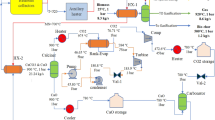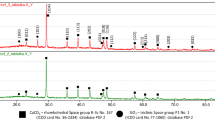Abstract
In a number of countries peat plays an important role in the energy balance. However, the share of peat-generated power on a worldwide scale does not exceed 0.028%. The reason for such a low involvement of peat in the energy balance is a number of properties hindering its use for power production. Pyrolysis is a promising field of using peat for power generation, but the need to supply a large amount of heat for it to occur is the barrier to mainstreaming the technologies of pyrolysis. In this work we study the composition of peat from two deposits in Tomsk region and the products of their pyrolysis as well as exothermic effects in order to identify the conditions necessary for autothermal pyrolysis. We used the methods of physical experiment and differential thermal analysis to explore the total heat of pyrolysis and assessed the feasibility of autothermal pyrolysis by calculation. The research has shown that with a moisture content of < 8.85% the pyrolysis of peat sample No. 2 is autothermal. The pyrolysis of peat sample No. 1 cannot be autothermal even if the sample is dried. This stems from the high content of mineral matter, which includes a large amount of carbonates.




Similar content being viewed by others
References
Popel’, O.S., Reutov, B.F., Antropov, A.P.: Prospective lines of using renewable energy sources in centralized and independent power systems. Therm. Eng. (2010). doi:10.1134/S0040601510110017
Rehman, S., Al-Hadhrami, L.M.: Study of a solar PV—diesel—battery hybrid power system for a remotely located population near Rafha, Saudi Arabia. Energy (2010). doi:10.1016/j.energy.2010.08.025
Kaldellis, J.K., Kavadias, K.A.: Cost-benefit analysis of remote hybrid wind-diesel power stations: case study Aegean Sea islands. Energy Policy (2007). doi:10.1016/j.enpol.2006.04.012
Kontorovich, A.E., Epov, M.I., Eder, L.V.: Long-term and medium-term scenarios and factors in world energy perspectives for the 21st century. Russ. Geol. Geophys. (2014). doi:10.1016/j.rgg.2014.05.002
Kleineidam, P., Dörr, J.: Renewable power generation 2015: the latest World-Market Status. Renew. Energy Focus (2015). doi:10.1016/j.ref.2015.10.027
Meade, N., Islam, T.: Modelling European usage of renewable energy technologies for electricity generation. Technol. Forecast. Soc. Chang. (2015). doi:10.1016/j.techfore.2014.03.007
Venkata Mohan, S., Nikhil, G.N., Chiranjeevi, P., Nagendranatha Reddy, C., Rohit, M.V., Kumar, A.N., Sarkar, O.: Waste biorefinery models towards sustainable circular bioeconomy: critical review and future perspectives. Bioresour. Technol. (2016). doi:10.1016/j.biortech.2016.03.130
Bezrukikh, P.P., Karabanov, S.M.: Renewable energy efficiency. In: International Conference on Environment and Electrical Engineering (EEEIC 2016), Florence, 2016. doi:10.1109/EEEIC.2016.7555545
Izadyar, N., Ong, H.C., Chong, W.T., Leong, K.Y.: Resource assessment of the renewable energy potential for a remote area: a review. Renew. Sustain. Energy Rev. (2016). doi:10.1016/j.rser.2016.05.005
Laitinen, S., Laitinen, J., Fagernäs, L., Korpijärvi, K., Korpinen, L., Ojanen, K., Aatamila, M., Jumpponen, M., Koponen, H., Jokiniemi, J.: Exposure to biological and chemical agents at biomass power plants. Biomass Bioenergy (2016). doi:10.1016/j.biombioe.2016.06.025
Grishin, A.M., Zima, V.P., Kasymov, D.P.: On the deepening mechanism of the site of peat combustion. J. Eng. Phys. Thermophys. (2013). doi:10.1007/s10891-013-0920-1
Boyarko, G.Yu., Bernatonis, P.V., Bernatonis, V.K.: The peat industry of Russia and the world. The analysis of the current state and development prospects. Min. Resour. Russ. Econ. Manag. 6, 56–61 (2014) (in Russian)
Theis, M., Skrifvars, B.-J., Hupa, M., Tran, H.: Fouling tendency of ash resulting from burning mixtures of biofuels. Part 1: deposition rates. Fuel (2006). doi:10.1016/j.fuel.2005.10.010
Tugov, A.N., Ryabov, G.A., Shtegman, A.V., Ryzhii, I.A., Litun, D.S.: All-Russia Thermal Engineering Institute experience in using difficult to burn fuels in the power industry. Therm. Eng. (2016). doi:10.1134/S0040601516070089
Barišić, V., Hupa, M.: On changes in bed-material particles from a 550 MWth CFB boiler burning coal, bark and peat. Fuel (2007). doi:10.1016/j.fuel.2006.07.016
Kurkela, E., Ståhlberg, P.: Air gasification of peat, wood and brown coal in a pressurized fluidized-bed reactor. I. Carbon conversion, gas yields and tar formation. Fuel Process. Technol. (1992). doi:10.1016/0378-3820(92)90038-R
Tabakaev, R., Shanenkov, I., Kazakov, A., Zavorin, A.: Thermal processing of biomass into high-calorific solid composite fuel. J. Anal. Appl. Pyrol. (2017). doi:10.1016/j.jaap.2017.02.016
Kosov, V.V., Sinelshchikov, V.A., Sytchev, G.A., Zaichenko, V.M.: Effect of torrefaction on properties of solid granulated fuel of different biomass types. High Temp. (2014). doi:10.1134/S0018151X14060170
Mursito, A.T., Hirajima, T., Sasaki, K.: Upgrading and dewatering of raw tropical peat by hydrothermal treatment. Fuel (2010). doi:10.1016/j.fuel.2009.07.004
Simonov, A.D., Fedorov, N.A., Dubinin, Yu.V., Yazykov, N.A., Yakovlev, V.A., Parmon, V.N.: Catalytic heat-generating units for industrial heating. Catal. Ind. (2013). doi:10.1134/S207005041301008X
Antropov, A.P., Batenin, V.M., Zaichenko, V.M.: New technologies for distributed energetics. High Temp. (2015). doi:10.1134/S0018151X15010010
Di Blasi, C.: Modeling chemical and physical processes of wood and biomass pyrolysis. Prog. Energy Combust. Sci. (2008). doi:10.1016/j.pecs.2006.12.001
He, F., Yi, W., Bai, X.: Investigation on caloric requirement of biomass pyrolysis using TG-DSC analyzer. Energy Convers. Manag. (2006). doi:10.1016/j.enconman.2005.11.011
Van de Velden, M., Baeyens, J., Brems, A., Janssens, B., Dewil, R.: Fundamentals, kinetics and endothermicity of the biomass pyrolysis reaction. Renew. Energy (2010). doi:10.1016/j.renene.2009.04.019
Park, W.C., Atreya, A., Baum, H.R.: Experimental and theoretical investigation of heat and mass transfer processes during wood pyrolysis. Combust. Flame (2010). doi:10.1016/j.combustflame.2009.10.006
Vargaftik, N.B.: Reference book on heat-transfer properties of gases and liquids [Spravochnik po teplofizicheskim svojstvam gazov i zhidkostej]. Stars, Moscow (2006) (in Russian)
Grishin, A.M., Golovanov, A.N., Sukov, Ya.V.: Experimental determination of thermophysical, thermokinetic, and filtration characteristics of peat. J. Eng. Phys. (2006). doi:10.1007/s10891-006-0135-9
Kulesh, R.N.: Heat and mass transfer during ignition and combustion of a batch of peat: extended abstract of Cand. Sci. [Teplomassoperenos pri zazhiganii i gorenii massiva torfa: avtoreferat dissertacii na soiskanie stepeni kandidata tehnicheskih nauk]. Tomsk (2010) (in Russian)
Bogdanov, N.N.: Low-temperature carbonization and gasification of peat [Polukoksovanie i gazifikacija torfa]. Gosenergoizdat, Moscow (1947) (in Russian)
Gronli, M.G., Melaaen, M.C.: Mathematical model for wood pyrolysis-comparison of experimental measurements with model predictions. Energy Fuels. 14, 791–800 (2000)
Boiler thermal design: standard procedure [Teplovoj raschet kotlov: normativnyj metod]. Publisher NPO CKTI, St. Petersburg (1998) (in Russian)
Misnikov, O.S.: Physicochemical principles of hydrophobization of mineral binders by additives produced from peat raw material. Theor. Found. Chem. Eng. (2006). doi:10.1134/S0040579506040130
Chertkova, E.Yu.: Tehnologija dobychi i kondicionirovanija frezernogo torfa dlja poluchenija gidrofobnyh modifikatorov: avtoreferat dissertacii [The technology of extraction and conditioning of milled peat for obtaining a hydrophobic modifiers: dissertation abstract of Cand. Sci.]. Tver, 2014 (in Russian)
Nordin, A.: Chemical elemental characteristics of biomass fuels. Biomass Bioenergy (1994). doi:10.1016/0961-9534(94)E0031-M
Young, K.D., Leboeuf, E.J.: Glass transition behavior in a peat humic acid and an aquatic fulvic acid. Environ. Sci. Technol. (2000). doi:10.1021/es000889j
Peterson, A.A., Vogel, F., Lachance, R.P., Fröling, M., Antal, M.J. Jr., Tester, J.W.: Thermochemical biofuel production in hydrothermal media: A review of sub- and supercritical water technologies. Energy Environ. Sci. (2008). doi:10.1039/b810100k
Grønli, M.G., Várhegyi, G., Di Blasi, C.: Thermogravimetric analysis and devolatilization kinetics of wood. Ind. Eng. Chem. Res. 41, 4201–4208 (2002)
Rakovskii, V.E., Filimonov, F.A., Novichkova, E.A.: Khimiya pirogennykh protsessov [Chemistry of Pyrogenic Processes]. Akad. Nauk BSSR, Minsk (1959) (in Russian)
Lishtvan, I.I., Terent’ev, A.A., Bazin, E.T., Golovach, A.A.: Fiziko-khimicheskie osnovy tekhnologii torfyanogo proizvodstva [Physicochemical Principles of Technology of the Peat Industry]. Nauka i Tekhnika, Minsk (1983) (in Russian)
Smol’yaninov, S.I., Maslov, S.G.: Termobriketirovanie torfa [Hot Peat Briquetting]. Tomsk. Gos. Univ., Tomsk (1975) (in Russian)
Zaychenko, V.M.: The rise of consumer properties of solid fuels from biomass [Povyshenie potrebitel’skih svojstv tverdogo topliva iz biomassy]. Energy Sav. [Energosberezheniye]. 3, 66–68 (2014) (in Russian)
Huang, C., T-Raissi, A.: Thermodynamic analyses of hydrogen production from sub-quality natural gas. Part I: pyrolysis and autothermal pyrolysis. J. Power Sources (2007). doi:10.1016/j.jpowsour.2006.02.081
Amutio, M., Lopez, G., Aguado, R., Bilbao, J., Olazar, M.: Biomass oxidative flash pyrolysis: autothermal operation, yields and product properties. Energy Fuels (2012). doi:10.1021/ef201662x
Kazakov, A.V., Plakhova, T.M., Popov, R.I.: Autothermal pyrolysis of peat in conditions of free movement in layer. MATEC Web Conf. (2014). doi:10.1051/matecconf/20141901019
Sutcu, H.: Pyrolysis of peat: product yield and characterization. Korean J. Chem. Eng. (2007). doi:10.1007/s11814-007-0035-5
Yanga, J., Chena, H., Zhaob, W., Zhou, J.: TG–FTIR-MS study of pyrolysis products evolving from peat. J. Anal. Appl. Pyrol. (2016). doi:10.1016/j.jaap.2015.11.002
Batenin, V.M., Zaichenko, V.M., Kosov, V.F., Sinel’shchikov, V.A.: Pyrolytic conversion of biomass to gaseous fuel. Dokl. Chem. (2012). doi:10.1134/S0012500812090030
Zalkind, I.Ya., Vdovchenko, V.S., Dik, E.P.: Ash and slag in a boiler furnace [Zola i shlaki v kotel’nyh topkah]. Energoatomizdat, Moscow (1988) (in Russian)
Khoroshavin, L.B., Medvedev, O.A., Belyakov, V.A., Mikheeva, E.V., Rudnov, V.S., Baitimirova, E.A.: Torf: vozgoranie torfa, tushenie torfjanikov i torfokompozity [Peat: peat ignition, peat bogging and peat composites]. FGBU VNII GOChS, Moscow (2013) (in Russian)
Acknowledgements
The research is funded from RFBR (Grant Number 16-38-50124). The experimental calculations are carried out at Tomsk Polytechnic University (Grant No. SAU-2016/25) within the framework of Tomsk Polytechnic University Competitiveness Enhancement Program Grant.
Author information
Authors and Affiliations
Corresponding author
Rights and permissions
About this article
Cite this article
Tabakaev, R., Astafev, A., Dubinin, Y. et al. Evaluation of Autothermal Peat Pyrolysis Realization for Fuel Processing Technologies. Waste Biomass Valor 10, 1021–1027 (2019). https://doi.org/10.1007/s12649-017-0115-7
Received:
Accepted:
Published:
Issue Date:
DOI: https://doi.org/10.1007/s12649-017-0115-7




